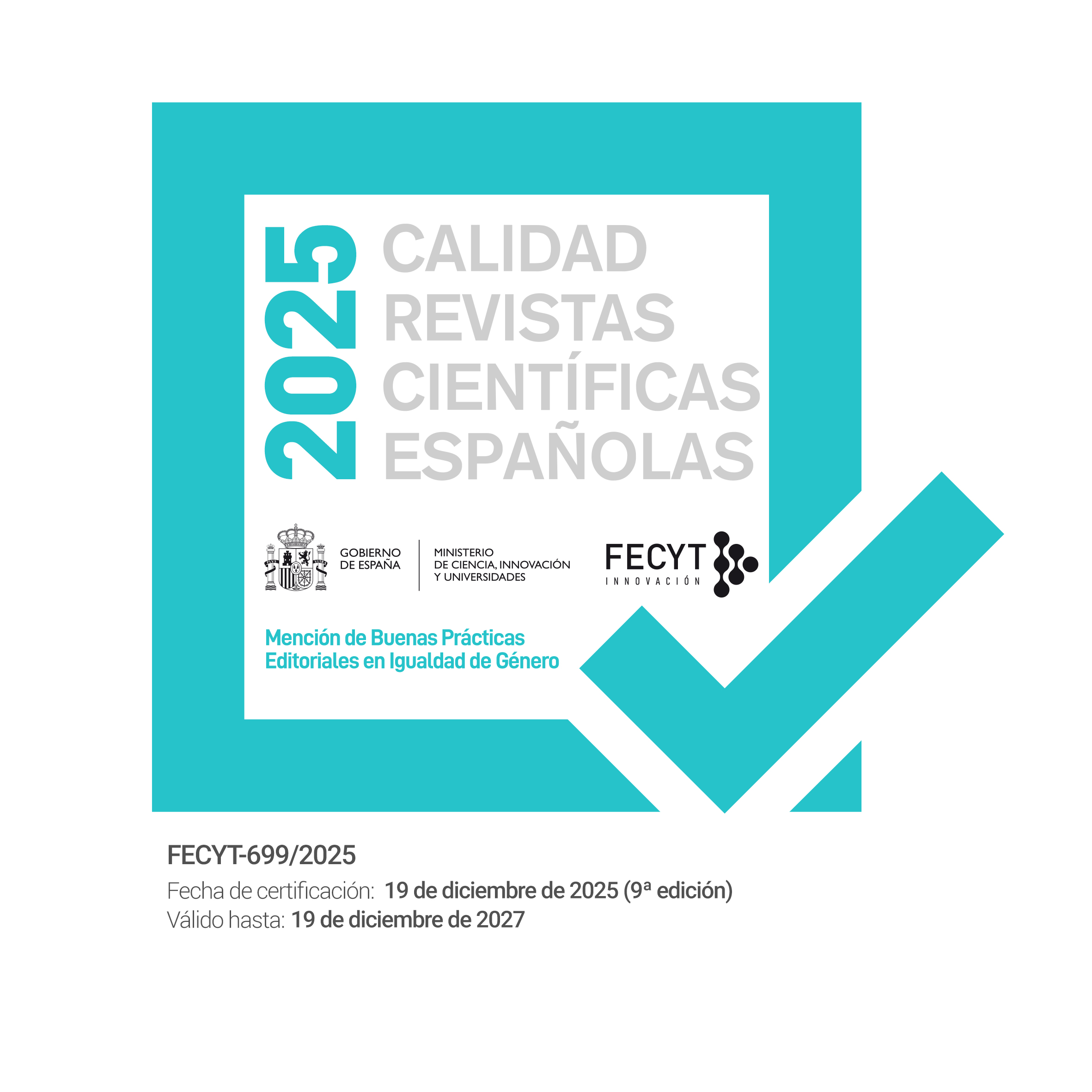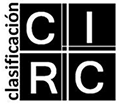La reconceptualización de la bruja como heroína en las novelas de Maite Carranza=the reconceptualization of the witch as a heroine in the novels by Maite Carranza
DOI:
https://doi.org/10.18002/ehf.v0i43.7058Palabras clave:
brujas, Maite Carranza, jóvenes adultos, heroína, monstruoso, femenino = witches, young adults, heroine, monstrous, femaleResumen
El presente artículo analiza la trilogía La Guerra de las brujas de Maite Carranza, publicada entre 2005 y 2007. La figura de la bruja, tradicionalmente considerada como un exponente de lo monstruoso femenino, ha surgido como una figura popular en la ficción para jóvenes adultos a la hora de abordar la formación de la identidad en lo que se ha denominado como ‘the teenage witch convention’. Mi análisis parte de este concepto y de las teorías de Joseph Campbell acerca del viaje del héroe para explorar la figura de la bruja joven o adolescente como un espacio de mediación e hibridez que permite articular los conceptos de heroína, negociación cultural y poder femenino.
This article analyzes the trilogy The War of the Witches by Maite Carranza, published between 2005 and 2007. The figure of the witch, traditionally considered an exponent of the monstrous feminine, has emerged as a popular figure in young adult fiction as a vehicle to address identity formation in what has been called “the teenage witch convention’. My analysis builds upon this concept and Joseph Campbell's theories about the hero's journey to explore the figure of the young witch as a space of mediation and hybridity that allows to articulate the concepts of heroine, cultural negotiation, and feminine power.
Descargas
Métricas alternativas
Citas
Bhabha, H. (2004): The Location of Culture, New York, Routledge.
Beeler, K. Seers, Witches and Psychics on Screen: An Analysis of Women Visionary Characters in Recent Television and Film, Jefferson, N.C., McFarland Press, 2008.
Brunsdon, Ch. (1997). Screen Tastes: Soap Opera to Satellite Dishes, New York, Routledge.
Campbell, J. ([1949] 1968). The Hero with a Thousand Faces, Princeton, Princeton UP.
Campbell, J. (2004). Pathways to Bliss: Mythology and Personal Transformation. Novato, CA, New World Library.
Carranza, M. (2005): El clan de la loba, Barcelona, Edebé.
Carranza, M. (2006): El desierto de hielo, Barcelona, Edebé.
Carranza, M. (2007): La maldición de Odi, Barcelona, Edebé.
Cashdan, S. (1999): The Witch Must Die: How Fairy Tales Shape Our Lives, New York, Basic Books.
Chollet, M. (2019): Brujas: ¿estigma o la fuerza invencible de las mujeres? Barcelona, Ediciones B.
Creed, B. (1993): The Monstrous-Feminine: Film, Feminism, Psychoanalysis, London, Routledge.
Daly, M. (1978): Gyn/ecology, the Metaethics of Radical Feminism, Boston, Beacon Press.
Dame, E., Rivlin, L., & Wenkart, H. (1998): Which Lilith? Feminist writers re-create the world's first woman, Northvale, N.J, Jason Aronson.
Ehrenreich, B., and D. English. (2010): Witches, midwives, & nurses: a history of women healers, New York City, Feminist Press at the City University of New York.
Frankel, V. (2010): From Girl to Goddess: The Heroine’s Journey Through Myth and Legend, Jefferson, N.C., McFarland Press.
Hodgkin, K. (2001): “Reasoning with Unreason: Visions, Witchcraft, and Madness in early modern England” en Stuart Clark (ed.) (2001) Languages of Witchcraft: Narrative, Ideology, and Meaning in Early Modern Culture, New York, St. Martin’s Press.
James, K. (2009): Death, Gender and Sexuality in Contemporary Adolescent Literature, New York, Routledge.
Lara Alberola, E. (2015): “La brujería en los textos literarios: el caso del "Malleus Maleficarum"” Revista de Filología Románica, 32. 1, 2015, 41-65.
Lara Alberola, E. (2016): “Leyendo la brujería: la escritura o reescritura de esta creencia en el Malleus Maleficarum”, Revista De Filología Románica, 33.2, 167-190.
Larner, C. (1984): Witchcraft and Religion: the Politics of Popular Belief, New York, NY, Blackwell.
Mackay, C., and H. Institoris. (2009): The Hammer of Witches: A Complete Translation of the Malleus Maleficarum, Cambridge, Cambridge UP.
Moody, N. (2005): “Modern Apprenticeships for Girls: The Teenage Witch Convention in Young Adult Fiction” en Nickianne Moody y Clare Horrocks (eds.) (2005) Children's Fantasy Fiction: Debates for the Twenty First Century, Liverpool, UK, Association for Research in Popular Fictions, 56-74.
Moseley, R. (2002): “Glamorous Witchcraft: Gender and Magic in Teen Film and Television”, Screen, 43.4, 403-422.
Murdock, M. (1990): The Heroine’s Journey, Boston, Shambhala Publications.
Nicholson, S. (2011): “The Problem of Woman as Hero in the Work of Joseph Campbell”, Feminist Theology, 19.2, 182-193.
Purkiss, D. (1996): The Witch in History: Early Modern and Twentieth-Century Representations, New York, Routledge.
Sempruch, J. (2008): Fantasies of Gender and the Witch in Feminist Theory and Literature, West Lafayette, Purdue UP.
Stewig, J. (1995): “The Witch Woman: A Recurring Motif in Recent Fantasy Writing for Young Readers”, Children's Literature in Education, 26.2, 119-133.
Waller, A. (2004): ‘‘‘Solid All the Way Through’: Margaret Mahy’s Ordinary Witches’’, Children’s Literature in Education, 35: 1, 77–86.
Descargas
Publicado
Cómo citar
Número
Sección
Licencia
Derechos de autor 2021 Cristina Casado Presa

Esta obra está bajo una licencia internacional Creative Commons Atribución-NoComercial-CompartirIgual 4.0.
Los autores o autoras que publican en esta revista están de acuerdo con los siguientes términos:
- Los autores o autoras conservan los derechos de autoría de su trabajo y ceden de forma no exclusiva los derechos de explotación (reproducción, distribución, comunicación pública, transformación) a la Universidad de León, por lo que pueden establecer, por separado, acuerdos adicionales para la distribución no exclusiva de la versión de la obra publicada en la revista (por ejemplo, alojarlo en un repositorio institucional o publicarlo en un libro), con un reconocimiento de su publicación inicial en esta revista.
- Este trabajo se encuentra bajo la Creative Commons Attribution-NonCommercial-ShareAlike 4.0 International License. Puede consultarse desde aquí la versión informativa y el texto legal de la licencia.
- Se permite y se anima a los autores y autoras a difundir electrónicamente las versiones pre-print (versión antes de ser evaluada) y/o post-print (versión evaluada y aceptada para su publicación) de sus obras antes de su publicación, ya que favorece su circulación y difusión más temprana y con ello un posible aumento en su citación y alcance entre la comunidad académica.











